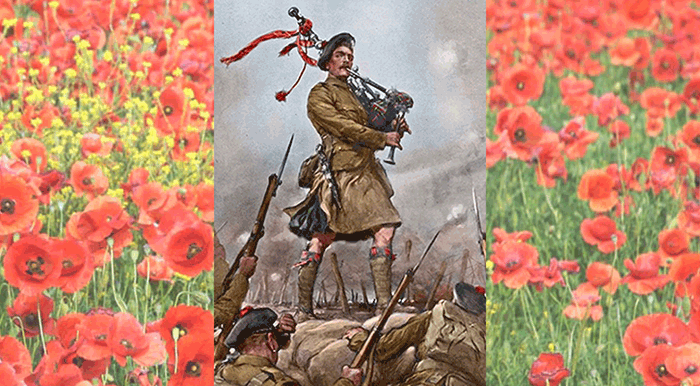
The piper with his bagpipes has been understood for years to be a symbol of Scottish patriotism, fierce, a brave fighter, and a cultural icon. Seeing the piper on the front lines of the First World War had the effect of energising the soldiers and lifting moral.
When pipers jumped over the top of the trenches and played the pipes with no thought of their own mortality, they harkened back to the ancient warriors of Scotland’s mythology.
There can be no doubt of the importance to the men of their company pipers. The music embraced the life of all soldiers from the excitement of signing up to being laid to rest.
Each battalion had its own tunes that bonded men to each other to create a unified fighting force and invigorated them when their spirits flagged.
[wds id=”2″]
The symbolism of bagpipe music, as understood in the soldier culture, was also understood by most of the officer corps, though sometimes they took longer to convince.
In the Boer War, an inspecting officer, Major-General Browne, told the pipers departing the UK to leave their pipes behind. The order was obeyed, but after landing at the Cape in South Africa, other officers sent home for replacement sets.
For some commanding officers the pipers in their battalions were only to play while on marches and when going and coming back from the front, but not into action.
They understood the importance and difficulty of trying to replace fallen pipers and that is why they were held back from the front. Yet there were others still did not understand the piper and his music and what it meant to their men.
Bagpipe music and the enemy
In 1915 Germany put out a commemorative coin which showed their awareness of the heroics of the ‘Piper of Loos’, Daniel Laidlaw. Laidlaw noticed that his company was unnerved by the British gas that was being blown back at them; none of the soldiers were moving.
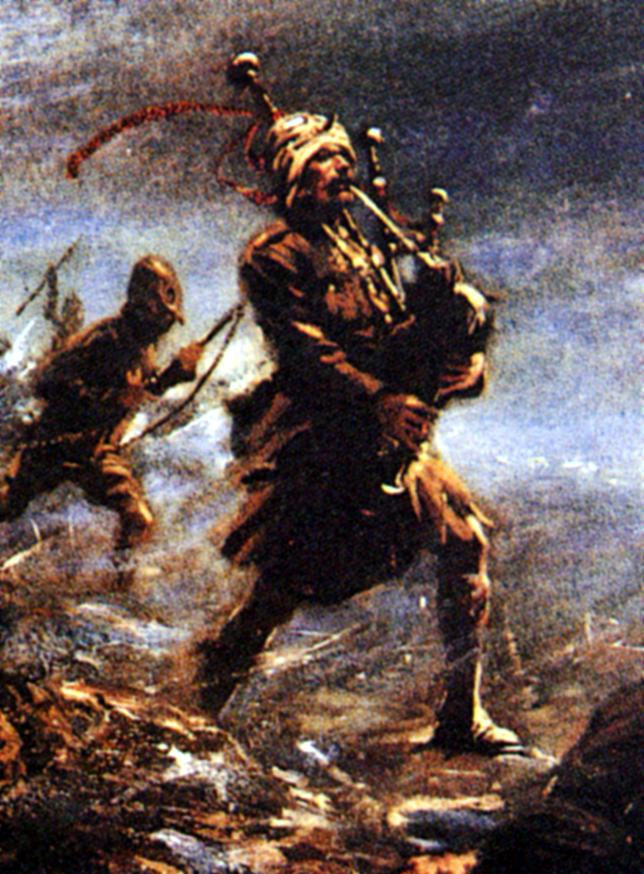
He grabbed his pipes, mounted the parapet and marched back and forth playing the men into the fight until he was wounded. On the coin was the likeness of Laidlaw as the ‘piper of death’ doing the ‘dance of death’.
The Germans had been slow to realise ‘the military value of the piper’ but soon learned to link the pipes and their music to a certain type of fighting man – the dreaded Scots.
Recognising the power of the music to inspire the enemy, the Germans began to try to target all officers and pipers. They believed ‘taking them out meant taking out something spiritual’. Early in the Battle of the Somme the tune, ‘The Campbells are Coming’, was said to put terror in the German soldiers.
They witnessed the effect the music had on the attitudes and emotions of those they fought against and it made them afraid.
…..when we heard the pipes of ‘those ones with the short skirt’ we took cold sweats and understood that many of us will never go home for Christmas’……
German soldier in WW1
The writer Clive Cussler states that his father, who was a soldier in the German army in WW1, claimed that the ‘French as fighters were second rate [though 1,327,000 Frenchmen died in WW1], English hard as bulldogs and Americans really ever ready to wrestle’ – but ‘only when we heard the pipes of those ones with the short skirt we took cold sweats and understood that many of us will never go home for Christmas’.
Soldiers became family; the piper and his music were a part of that family – with a special role. Certain melodies had meaning for them. The day would start with reveille. Each regiment would have their own tunes like ‘Johnny Cope’ or ‘Bannocks o’ Barley Meal’. For the Gordon Highlanders’ piper the morning tune was ‘Greenwoodside’.
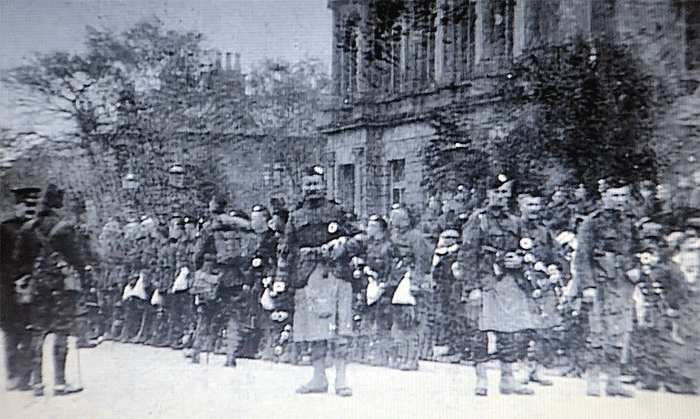
The pipes also called the men to meals, sick parade, call quarter, tea and last post – which was played at ten o’clock in the evening. The tune ‘Highland Laddie’ was played to warn the Royal Scots to dress for parade.
In September 1916 a Canadian contingent bound for WW1 were ‘roused’ out of their beds and boarded the Andania to ‘the skirl of the bagpipes’.
The pipers also entertained the soldiers and provided music while the officers dined. Robert Burns [obviously not the poet] stated in a newspaper letter that the sound of the bagpipes had been used to rally men to the recruitment.
The Manchester Evening News of 8 February 1915 supports this assertion, noting that the entertainer Mr Harry Lauder [who lost his son John in the war] had organised a group of pipers to tour around Scotland to aid in ‘stimulating recruiting’.
And in December 1914 the Liverpool Scottish reported that the music of the pipers echoed up and down the promenade as men were trained for the war. All seemed to be indoctrinated by the martial sound of the bagpipes.
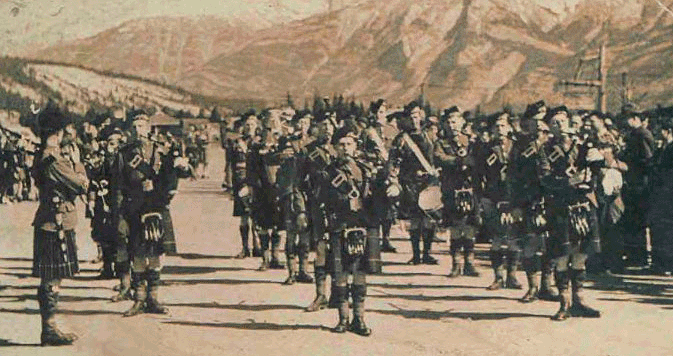
Even the English soldiers said they ‘felt uplifted’ when the music of the pipe band led their regiment on their marches and that they felt ‘unconscious of motion’.
At the Battle of Ypres, with the constant bombardment and with the introduction of gas, men hung back until two battalion pipers dropped the stretchers they were carrying, removed their masks, grabbed their pipes and played.
One soldier in a regiment of the Glasgow Highlanders described a march that was so long that ‘walking had become a purely mechanical exercise’ – until the pipes started up with ‘Highland Laddie’, their regimental tune. The effect on the men was almost instant as the music was ‘something more potent than wine’.
It was not only the ordinary soldier who realised the music could inspire the camaraderie, self-esteem, pride and a sense of belonging needed to function in that wartime setting. Certain officers, like the commanding officer of the Canadian 16th battalion, Colonel W.W. Peck, who never went anywhere without his personal piper, focused on what was best for his men.
This focus revealed to him the influence that ‘stirred the blood’ – ‘the martial music of the bagpipes’. Even though criticised for this belief, and, as he said, with ‘no Scottish blood in my veins’, he encouraged the sentiments and traditions that epitomised bagpipe music.
In earlier times, not all were totally reconciled with volunteer pipers in Scottish regiments. In 1852, Major General J.E.C. Napier reported the ‘irregularity’ of the 92nd regiment having pipers. But Napier found himself reprimanded by the Duke of Wellington, who wrote shortly before he died:
‘I am surprised that an officer who has seen, as l have seen, the gallant deeds performed by the Highland regiments in which their pipers played so important a part, should make such a report.’
- Abridged from ‘History Scotland’ magazine. Subscribe here.











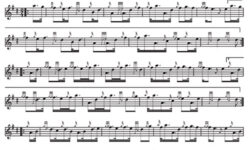

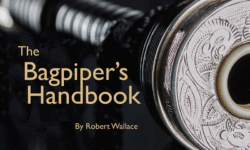





I had no idea that the bagpipes were played at battles during WWI. That explains a little bit on why they are played at funerals too. I have a friend who’s grandfather just died, he’s helping plan the funeral so they’ve been looking into hiring a bagpiper to play to honor his grandpa.